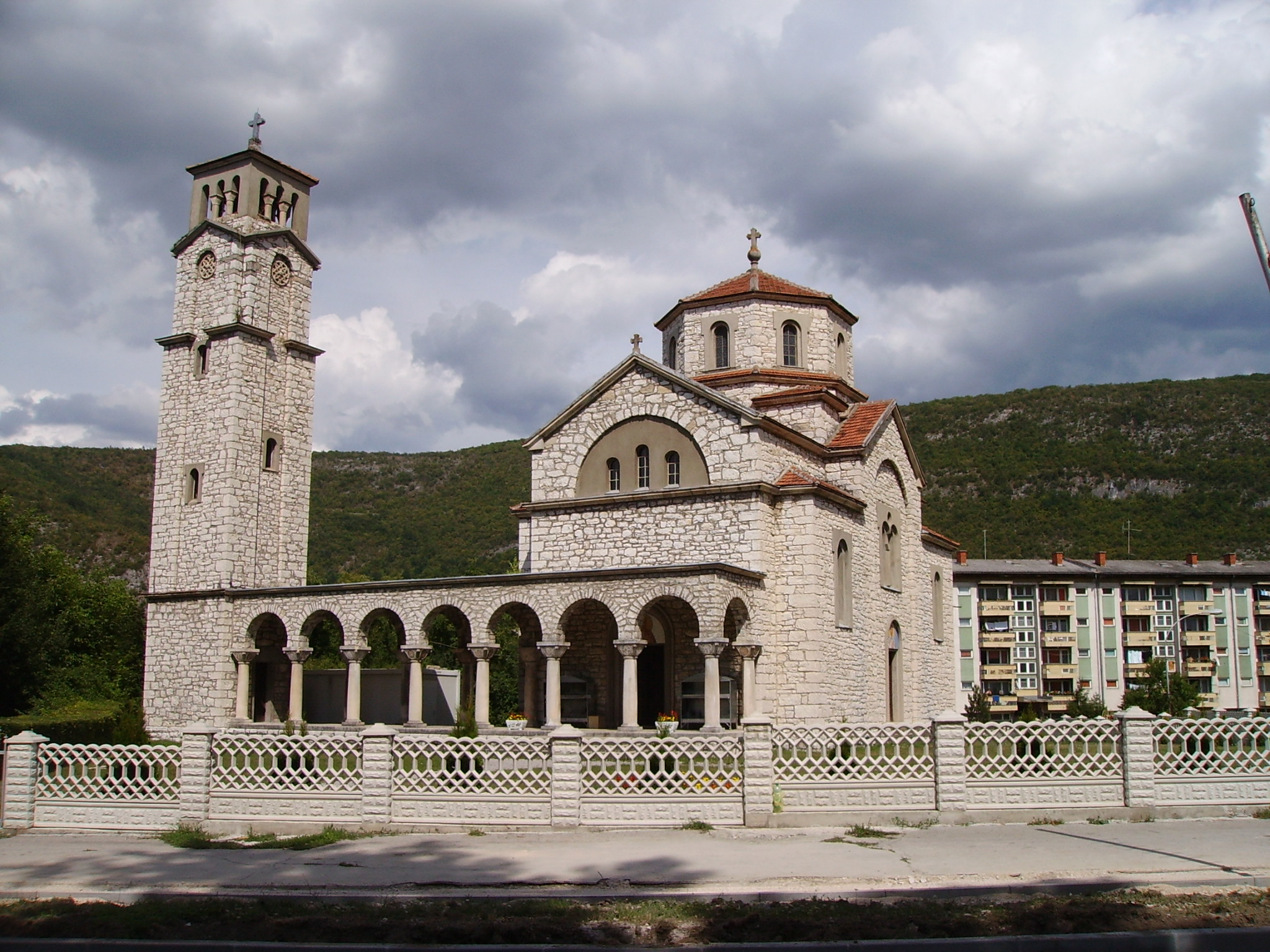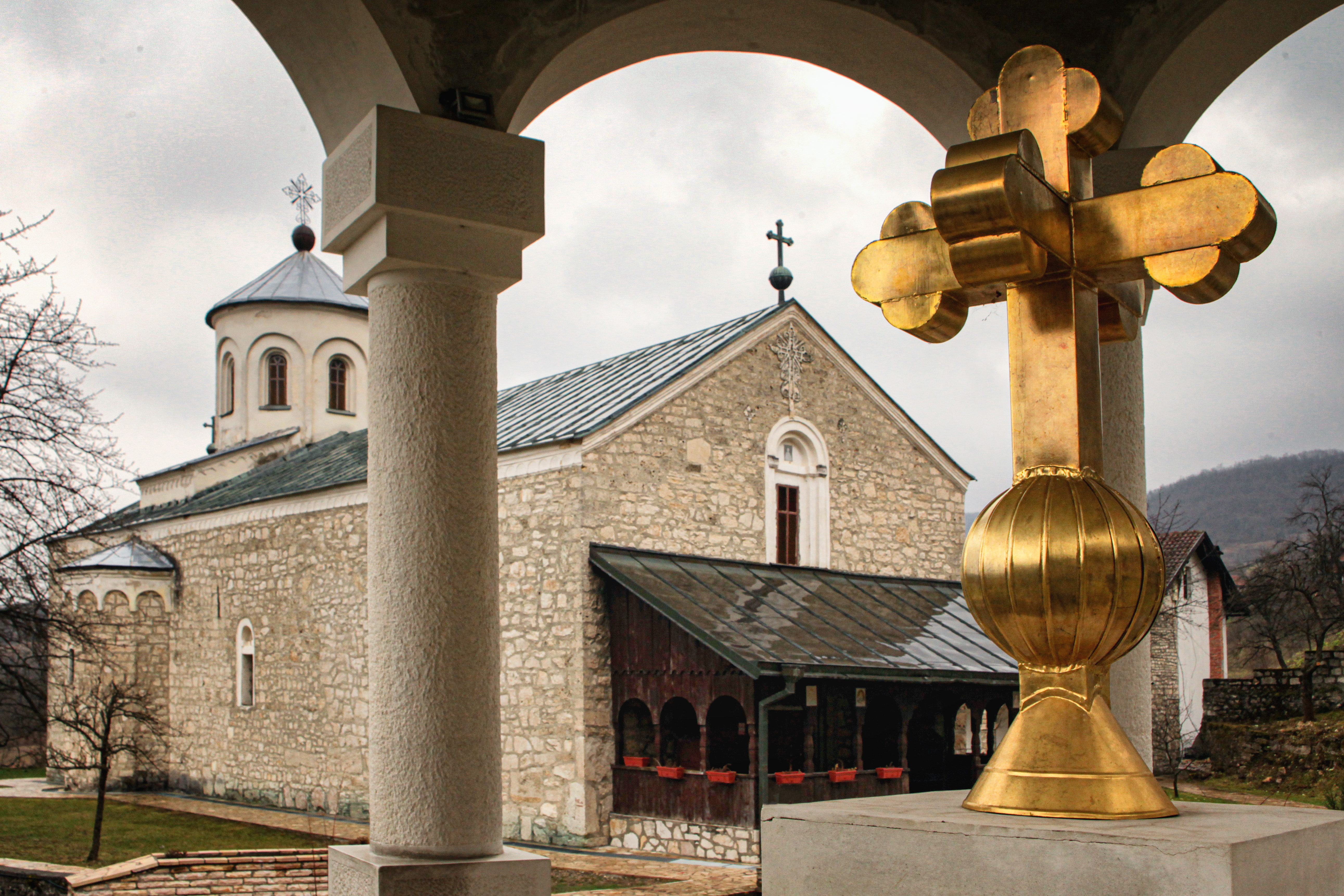|
Eparchy Of Bihać And Petrovac
The Eparchy of Bihać and Petrovac ( sr, Епархија бихаћко-петровачка) is an eparchy (diocese) of the Serbian Orthodox Church with its seat in Bosanski Petrovac, in Bosnia and Herzegovina. It has jurisdiction over the western regions of Bosnia and Herzegovina. Since 2017, Bishop of Bihać and Petrovac is Sergije Karanović. History Until 1900, territory of this eparchy for centuries belonged to the Eastern Orthodox Eparchy of Dabar and Bosnia. Upon the request of the Eastern Orthodox Serbs from its western regions, new Eparchy of Banja Luka was created in that year, with seat in the city of Banja Luka. Regions of Bihać and Bosanski Petrovac also belonged to that newly formed eparchy. In 1918, all Serbian Orthodox bishops in Bosnia and Herzegovina reached a unanimous decision to join with other Serbian ecclesiastical provinces into united Serbian Orthodox Church. Arrangements with the Ecumenical Patriarchate of Constantinople were made, and the canoni ... [...More Info...] [...Related Items...] OR: [Wikipedia] [Google] [Baidu] |
Eastern Orthodox
Eastern Orthodoxy, also known as Eastern Orthodox Christianity, is one of the three main branches of Chalcedonian Christianity, alongside Catholicism and Protestantism. Like the Pentarchy of the first millennium, the mainstream (or "canonical") Eastern Orthodox Church is organised into autocephalous churches independent from each other. In the 21st century, the number of mainstream autocephalous churches is seventeen; there also exist autocephalous churches unrecognized by those mainstream ones. Autocephalous churches choose their own primate. Autocephalous churches can have jurisdiction (authority) over other churches, some of which have the status of "autonomous" which means they have more autonomy than simple eparchies. Many of these jurisdictions correspond to the territories of one or more modern states; the Patriarchate of Moscow, for example, corresponds to Russia and some of the other post-Soviet states. They can also include metropolises, bishoprics, parishes, monas ... [...More Info...] [...Related Items...] OR: [Wikipedia] [Google] [Baidu] |
Bihać
Bihać ( cyrl, Бихаћ) is a city and the administrative centre of Una-Sana Canton of the Federation of Bosnia and Herzegovina, an entity of Bosnia and Herzegovina. It is situated on the banks of river Una in northwestern Bosnia and Herzegovina, in the Bosanska Krajina region. In 2013 its population was 56,261. Settlements * Bajrići *Brekovica * Bugar *Ćukovi * Doljani *Donja Gata * Dubovsko *Gorjevac * Grabež * Grmuša * Hrgar * Izačić * Jezero *Kalati *Kulen Vakuf *Lohovo * Lohovska Brda *Mala Peća * Mali Skočaj * Međudražje * Muslići * Ostrovica * Papari * Praščijak * Pritoka * Račić * Rajinovci *Ripač * Spahići * Srbljani * Velika Gata * Veliki Skočaj *Veliki Stjenjani * Vikići *Vrsta *Zavalje i Zlopoljac History According to documents and historical sources, the first medieval urban settlements and towns around the Una river, began to appear in the middle of the 13th century. Bihać, as the centre of , was first mentioned on 26 February 1260, in the ch ... [...More Info...] [...Related Items...] OR: [Wikipedia] [Google] [Baidu] |
Treskavac Monastery
Treskavac ( sr-cyrl, Трескавац) is a village in the municipality of Ribnik, Bosnia and Herzegovina Bosnia and Herzegovina ( sh, / , ), abbreviated BiH () or B&H, sometimes called Bosnia–Herzegovina and often known informally as Bosnia, is a country at the crossroads of south and southeast Europe, located in the Balkans. Bosnia and H ....Official results from the book: Ethnic composition of Bosnia-Herzegovina population, by municipalities and settlements, 1991. census, Zavod za statistiku Bosne i Hercegovine - Bilten no.234, Sarajevo 1991. References {{DEFAULTSORT:Treskavac, Ribnik Populated places in Ribnik Villages in Republika Srpska ... [...More Info...] [...Related Items...] OR: [Wikipedia] [Google] [Baidu] |
Veselinje Monastery
The Veselinje Monastery ( sr, Манастир Веселиње, Manastir Veseljenje) is a Serbian Orthodox monastery dedicated to John the Baptist and located at the village of Vrba south-east of the town of Glamoč, in western Bosnia and Herzegovina. The monastery's church, consecrated on 10 August 1975, was built without intention to found a monastery around it. The ktitor of the church was Veselin Nearlović, a businessman from Buenos Aires, Argentina, who was born in Vrba. After the ktitor agreed with the idea to establish a monastery at the church, monastic buildings were constructed, and the Veselinje Monastery was consecrated on 8 April 1985. The church was built at the site of an earlier, wooden church, which was erected in 1865. It was burned down during World War II, in 1941, by the Ustaše, Croatian fascists. The Ustaše also brutally tortured and murdered the parish priest of Vrba, Simo Banjac, whom the Serbian Orthodox Church canonised as a martyr in 2003. ... [...More Info...] [...Related Items...] OR: [Wikipedia] [Google] [Baidu] |
Glogovac Monastery
The Glogovac Monastery ( sr, Манастир Глоговац, Manastir Glogovac) is a Serbian Orthodox monastery dedicated to Saint George and located at the village of Babići near Šipovo in the Republika Srpska entity of Bosnia and Herzegovina. It is the only monastery in this area. The original building was destroyed in 1463 when this region was occupied by Ottoman Turks. First reconstruction Omer-paša Latas started reconstructing this monastery by building a church in 1867. Bishop Dionisije Milijević put this church into operation in 1869. According to one of the stories, enslaved Serbs asked the Sultan of Turkey to allow them to re-build this holy place. Permission was granted under condition that church bells were not heard. This is the reason the monastery is built between steep hills. Second reconstruction Glogovac is the spiritual focal point for this area. Seventy five years after the monastery was re-built it was destroyed again. This time it was done by the Ust ... [...More Info...] [...Related Items...] OR: [Wikipedia] [Google] [Baidu] |
Rmanj Monastery
The Rmanj Monastery ( sr, Манастир Рмањ, Manastir Rmanj) is a Serbian Orthodox monastery dedicated to Saint Nicholas and located in Martin Brod in north-western Bosnia and Herzegovina, at the left bank of the Unac River near its confluence with the Una. The exact year of its construction cannot be determined, though the Rmanj Monastery is the westernmost Serbian Orthodox monastery at the end of the 16th century.The monastery was founded before 1443, when it was first mentioned. History The exact year of the Rmanj monastery cannot be determined, although it was the westernmost Serbian Orthodox monastery at the end of the 16th century. The first reliable information about the existence of the Rmanj monastery is from 1443, at the time of the Serbian migrations due to Turkish pressure, in which the monks from the monastery also participated. The mention of Rmanj monks in the Kruševo monument (end of the 15th century) is the oldest written trace of that monastery, as well ... [...More Info...] [...Related Items...] OR: [Wikipedia] [Google] [Baidu] |
Eparchy Of Mileševa
Eparchy of Mileševa is the one of eparchies of the Serbian Orthodox Church, and is seated in Prijepolje, in the Mileševa monastery. History The establishment of the Eparchy Eparchy is based in the valley Lim (river) and laid on the foundation of the Mileševa monastery, established in the first half of the 13th century. Eparchy has often changed the name, but he always had a seat in the Mileševa monastery. On the Establishment Mileševo Metropolia very little is known. In a service Saint Sava it is called "Glorious Archbishopric". One Metropolitan Bishop of Mileseva, whose name is unknown, crowned ban Tvrtko I of Bosnia as Serbian king and Bosnian King in 1377. The first Metropolitan Bishop of Mileseva whose name is known to us, is David. He was a "close associate to HercegStjepan Vukčić Kosača and his sons. " When Herceg Stjepan Vukčić Kosača drawing up a will, Metropolitan Bishop of Mileseva David, wrote and was a witness during the signing of the same. After th ... [...More Info...] [...Related Items...] OR: [Wikipedia] [Google] [Baidu] |
Serbian Patriarch Irinej
Irinej ( sr-cyr, Иринеј, , en, Irenaeus; born Miroslav Gavrilović; 28 August 193020 November 2020) was the head of the Serbian Orthodox Church from 2010 until his death in 2020. He had first been the bishop of Niš between 1975 and 2010, and then the patriarch of the Serbian Orthodox Church from 22 January 2010 succeeding Pavle, until his death. He was considered, both abroad and at home, to be a moderate traditionalist, open to global inter-religious dialogue. Early life Irinej was born as Miroslav Gavrilović (; sr-cyr, Мирослав Гавриловић) in Vidova near Čačak, Kingdom of Yugoslavia (now Serbia). After graduating from high school, he enrolled and completed the Serbian Orthodox Seminary of Prizren. He then enrolled at the University of Belgrade's Theological Faculty and served in the army after graduating. After compulsory military service, he was tonsured a monk in 1959 in Rakovica monastery, receiving the monastic name of "Irinej" (from grc, ... [...More Info...] [...Related Items...] OR: [Wikipedia] [Google] [Baidu] |
Atanasije Rakita
Atanasije ( sr-cyr, Атанасије) is the Serbian variant of the Greek name ''Athanasios''. Diminutives of the name include Atanas and Tanasko. It may refer to: *Atanasije II Gavrilović (d. 1752), Serbian Patriarch (1747–52) *Athanasius I of Ohrid (fl. 1596–1615), Archbishop of Ohrid (1596–98) * Atanasije (scribe) (1200–1265), Serbian monk-scribe *Tanasko Rajić (1754–1815), Serbian Revolutionary *Atanasije Stojković (1773–1832), Serbian writer and educator *Atanasije Jevtić (1938–2021), Serbian Orthodox bishop and theologian *Atanasije Nikolić (1803–1882), first rector of the Belgrade Lyceum *Atanasije Antonijević, Serbian archpriest See also *Atanasijević Atanasijević ( sr-cyr, Атанасијевић) is a Serbian surname, a patronymic derived from Atanasije, the Serbian variant of Greek '' Athanasios''. Atanasijević families may be found in all parts of Serbia as well as Montenegro, since it is ..., patronymic Further reading *{{cite book, aut ... [...More Info...] [...Related Items...] OR: [Wikipedia] [Google] [Baidu] |
Eparchy Of Zvornik And Tuzla
The Eparchy of Zvornik and Tuzla ( sr, Епархија зворничко-тузланска) is an eparchy of the Serbian Orthodox Church with its seat in Bijeljina, Bosnia and Herzegovina. It has jurisdiction over the north-eastern regions of Bosnia and Herzegovina. Since 2017, Bishop of Zvornik and Tuzla is Fotije Sladojević. History In the north-eastern parts of Bosnia and Herzegovina, on the territory of the present day Eparchy of Zvornik and Tuzla, there are several archeological localities that indicate the presence of early Christianity in that region during late Roman period and early Middle Ages. Since 1284, the region came under the rule of Serbian king Stefan Dragutin and soon after that an Eastern Orthodox Bishop Vasilije was appointed for all Bosnian regions, western of the river Drina. During the reign of Serbian Despots Stefan Lazarević (1389-1427) and Đurađ Branković (1427-1456), much of the north-eastern Bosnia was again under Serbian rule. During that t ... [...More Info...] [...Related Items...] OR: [Wikipedia] [Google] [Baidu] |
Hrizostom Jević
Hrizostom Jević (; born 4 March 1952) is a Bosnian prelate of the Serbian Orthodox Church. He has been the metropolitan bishop of Dabar-Bosna since 2017. Jević, formerly a monk of the Krka monastery, has also served as bishop of Bihać and Petrovac (1991 – 2013) and Zvornik and Tuzla (2013 – 2017). Early life Jević was born in Vođenica near Bosanski Petrovac to father Nikola and mother Rosa née Radošević. He finished elementary school with excellent grades in 1967. While still in elementary school, Jević expressed interest to become a priest, which his family opposed, which resulted in a one-year pause in his education. Eventually, in 1968 he enrolled at the five-year seminary at the Krka monastery in Kistanje in Croatia, from where he graduated in 1973, also with excellent grades. While at the seminary, he was involved in singing and folklore. While at the fourth year of the seminary, Jević took monastic vows in front of Bishop Stefan Boca of Dalmatia on ... [...More Info...] [...Related Items...] OR: [Wikipedia] [Google] [Baidu] |





